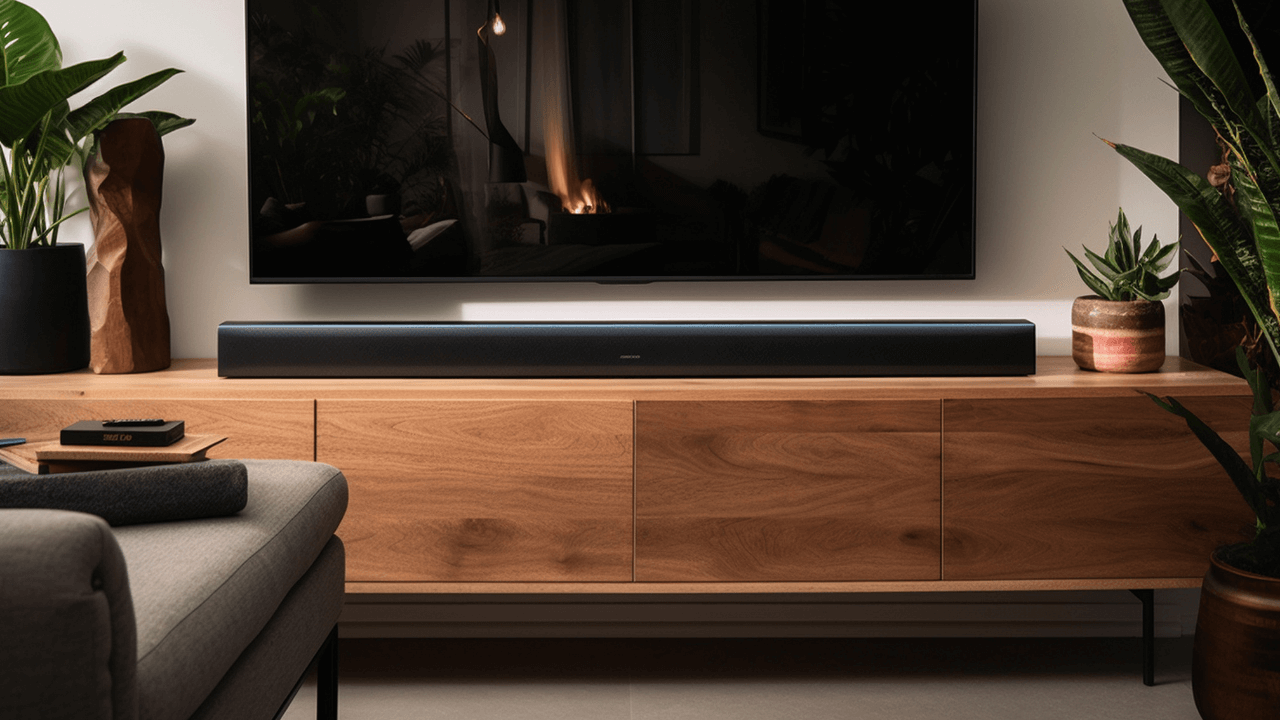Even though home theaters are made up of several different components, the vast majority of the attention paid to home theater technology in recent years was centered on the TV itself: flat screens have come a long way and they now offer ultra-high-resolution imagery, with rich color and deep contrast. As the focal point of most home entertainment systems, today’s TVs are bigger (yet thinner), run cooler and more efficiently than ever before, all while giving us a level of photorealism that was out of reach for previous generations. But there’s a catch.
One aspect of the home entertainment experience that hasn’t improved much — if at all — as TVs have evolved, is the sound quality from the speakers in the TV. Manufacturers have realized, especially recently, that most people will connect some sort of external audio device — a sound bar, at least — to the TV, so they have figured out that they can lower the retail price of their TV even further by keeping the onboard speaker technology at a passable minimum of performance, while many of them also offer a range of sound bars and other home theater accessories to complement the TVs in their product lines.
We all go to the movies for the big picture, big sound, immersive experience. As time has gone by, more people have sought to replicate that experience at home to the greatest degree possible. Audio is a major part of this entertainment experience (as I explained in an earlier post), and considering that most onboard TV speakers today aren’t that great, consumers have to make some choices when setting up a home entertainment system.
The home theater is not a cinema, of course. While a lot of the advanced audio technology now available for the home was originally developed for the cinema, there are some major differences to be aware of.
Even though cinemas are built to a range of different sizes, the configuration of a cinema A/V system doesn’t vary nearly as much as the configuration of a home theater. Cinemas are generally large, windowless rooms with high ceilings. They typically have sound dampening materials on the walls, and are furnished only with numerous rows of seats, permanently attached to the floor and facing a fixed screen. Because the cinema stays in a constant state, it’s a more straightforward process to “tune” the audio system to suit the specific acoustic characteristics of that exact room, with speakers placed in precise and ideal locations for optimal sound reproduction.
By contrast, every living room or home theater is completely different. Each room is differently shaped, furnished and configured. While some dedicated home theater spaces may have acoustic treatment on the walls to minimize reverberation, most of them do not. Furnishings and other architectural characteristics can make ideal speaker placement a challenge, meaning that consumers are often faced with the reality of having to put their audio components wherever they can find space for them. Some rooms (and budgets) will accommodate full surround multichannel systems with front, center and rear speakers, in addition to subwoofers and even side and “height” speakers to add to the immersivity of the experience. Other situations will necessitate more modest systems, perhaps only with a more affordable sound bar as the best audio option, depending on the individual budget.
As consumers, most of us want to get the best sound possible, and we should try to get as close as possible to that ideal multichannel audio system. One of the simplest things to focus on is: how easy is it to understand the spoken dialogue in a movie or TV show? This concept is known as “dialogue intelligibility” and is a key area of focus for the home theater equipment manufacturer.
For instance, you could have the nicest, newest 4K TV with OLED and HDR, delivering you a lifelike picture, but if the speakers reproducing the sound are obstructed, or reverberating off of a nearby wall, or of marginal quality, your overall viewing experience is going to suffer because it may be difficult to understand what the actors are saying to each other. There are various approaches to addressing these limitations, from adding multi-channel systems with lots of speakers, to employing virtualization technologies like DTS Virtual:X in smaller systems. In either case, the focus is on enhancing the dialogue and broadening the range of audio frequency that’s delivered, to produce a more immersive and realistic spectrum of sound.
The most basic thing you can do to improve dialogue intelligibility is to find yourself a sound bar to mount with your TV, so the dialogue coming from your TV is properly amplified and coming from the direction of the picture. Sound bars start at under $200 and are easily connected to any modern TV. Even a basic two-channel sound bar will deliver more intelligible dialogue than the (often rear-firing) speakers inside your new TV.
It’s also important when buying a new TV to have an understanding of what you’re buying. Few people would buy a car without taking it for a test drive first, but many people these days will buy a TV off the shelf or from an online retailer without seeing and hearing it in action first. Wherever possible, go look at the exact make and model of TV (and soundbar or other audio components) you’re considering, and take a listen to the speakers. This will help you get a better sense of how much additional equipment you may need to buy in order to get the kind of audio experience you’re looking for. When you’re listening, think about the place where the TV will be in your house: what is that room like? Will the TV speakers be sufficient for your needs? What’s your budget? Is the room conducive to a full surround system, or can the room only accommodate a sound bar? Have you measured the space where you’ll install the equipment to know if it will fit? Do you have any other space limitations for the sound bar or speakers you are looking at? Will you be able to run wires to surround speakers, or do you need a wireless system? This is a lot to think about, and there are many factors to consider, but investing some time and forethought at this stage will assuredly increase your satisfaction with the system you end up putting together.
Some people may have big dreams but a small budget, and if that’s the case for you, it doesn’t mean that you have to put off improving your sound until you can afford to buy everything at once. Many of these systems are scalable, meaning that you can start with a basic and relatively inexpensive soundbar and add other components as your budget allows.
Looking upward from that basic level, the sky is truly the limit. As your budget increases, sound bars first become more advanced and add channels. After that, you can look at home-theater-in-a-box systems, then go up to a more a-la-carte approach where the consumer picks out a specific AV receiver and speakers, and so on. While the levels of customization for a home theater system today are limited only by your imagination and your budget, a better home theater is often more attainable than you might think.
Stay up to date on the latest technology and insights from DTS here.



